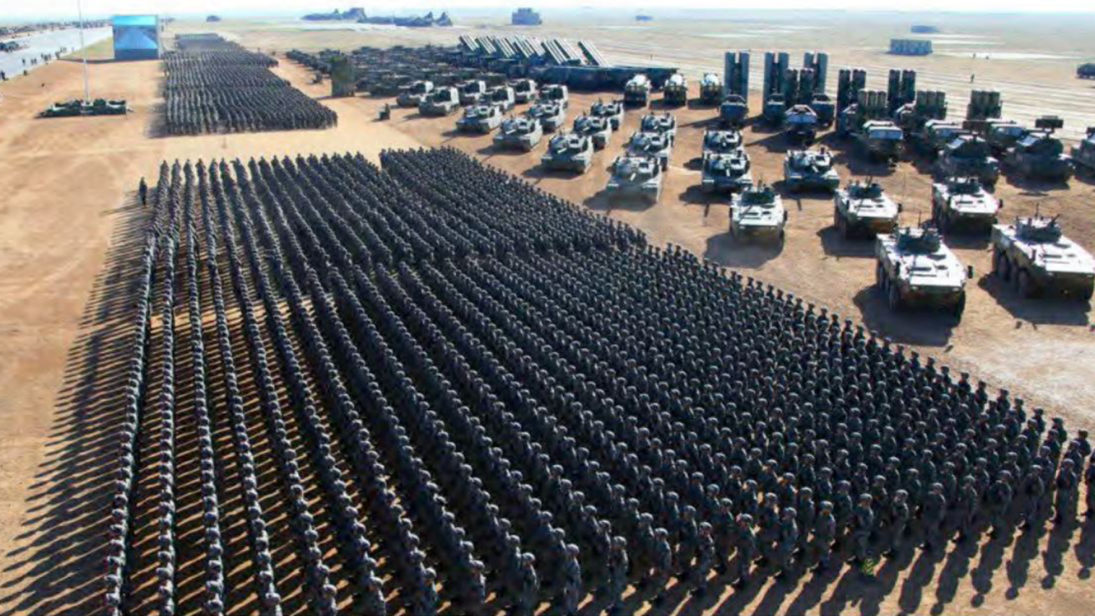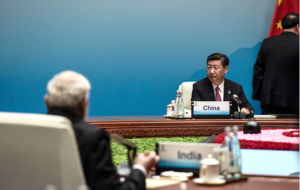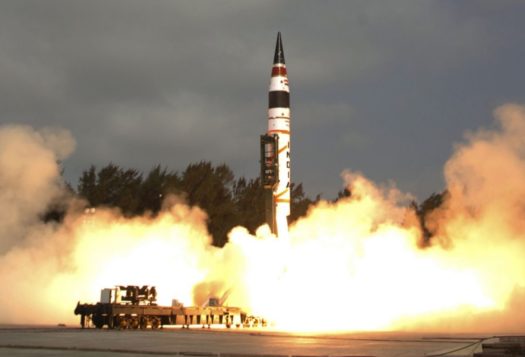
The national defense white paper (NDWP) issued by China’s Ministry of National Defense in late July is the most recent official document on defense and security policy to follow the 19th National Congress of the Communist Party of China. Complementing the National Congress, the white paper lays out a blueprint of China’s developmental goals and foreign policy priorities under the “undisputed” leadership of Xi Jinping. Titled “China’s National Defense in a New Era,” the white paper provides the international community a better understanding of China’s threat perceptions, military intentions, and estimates of its military expenditure. Notably, it also provides a rhetorical response to the U.S. 2017 and 2018 National Security Strategy and National Defense Strategy reports, which identified China as a strategic competitor of the United States.
From New Delhi’s point of view, the white paper offers authoritative insights about China’s strategic thinking and future intentions, which in the long run are likely to condition India’s own geostrategic environment. Accordingly, there are three aspects of the paper that may impact New Delhi.
From New Delhi’s point of view, the white paper offers authoritative insights about China’s strategic thinking and future intentions, which in the long run are likely to condition India’s own geostrategic environment.
First is Beijing’s perception of its own security environment. Although the paper pays lip service to the stability of a multipolar world order and China’s commitment to peace, its overall appraisal of the country’s security environment remains negative. The laudatory statements on the emergence of new markets and the triumph of a universal aspiration for peace over war are followed by a grim representation of threats from separatist movements at home to escalating geostrategic and military competition with the United States abroad. This seemingly paradoxical assessment indicates that while China may consider the existing multipolar world order and absence of any explicit major power conflict as conducive to its economic growth, it sees separatist movements, perceived to be stirred by extra-regional powers, combined with competition with the United States in the Asia-Pacific as impediments to its rise and national security. A careful reading of the white paper suggests that China sees these trends both inside and outside its territory as disruptive, and it is likely to adopt a more proactive approach in its defense and security policy in response.
For India, the main implication is that China will take this approach in the region central to New Delhi’s Act East Policy. Formulated by the Modi government in 2014, the Act East Policy has often been described by Chinese analysts as India’s strategy to balance China’s position in Southeast Asia. Consequently, a more muscular defense and security policy driven by China’s strategic insecurities will only intensify geopolitical jostling between the two countries, overburdening India’s scarce diplomatic and military resources. Also, as part of a broader policy to suppress separatist movements, Beijing is likely to adopt a more hardline approach towards territory it contests with India, especially in Tawang in Arunachal Pradesh. Particularly considering the consternation in China over New Delhi’s recent move to incorporate Ladakh, which includes Aksai Chin that Beijing also claims, as a Union Territory of India, China may resort to frequent muscle-flexing along the disputed border in the next few months, necessitating a careful balance of military decisiveness and diplomacy on India’s part.
The second important theme highlighted in the white paper is China’s growing tensions with other major powers in the Asia-Pacific region, namely the United States, Japan, and Australia. The document describes U.S. actions as undermining the region’s strategic balance, accuses Japan of trying to circumvent post-war mechanisms that refrain Japan from developing offensive capabilities, and raises concerns over Australia’s military expansion. As a result of economic and strategic shifts within the Asia-Pacific, the document argues, major power competition has begun to destabilize the region.

In this backdrop, any strategic outreach by New Delhi in areas China is explicitly wary about, such as India’s joint oil exploration venture with Vietnam in the South China Sea or expansion of power projection capabilities in Southeast Asia, is likely to ruffle Beijing’s feathers. Adding to this concern is that the white paper specifically targets countries which, along with India, are members of the Quad, an informal security grouping revived in 2017 to promote a “free and open Indo-Pacific.” While India’s present low status as a power in China’s foreign policy discourse might have led to its exemption from the rhetorical barrage aimed at other Quad members in the white paper, New Delhi should understand that rising economic and military prominence will bring India within China’s major power radar and any future security and strategic endeavors with the Quad would likely be interpreted by Beijing as anti-China. Previously, Chinese state media has claimed that India’s endorsement of Western security paradigms will inevitably lead to competition and confrontation between the two countries.
The final—and perhaps the most important—aspect of the white paper is its emphasis on China’s information, cyber, and outer space military technology advancement. In a major shift from the defense white paper published in 2015, which only referred to the rise of “informationized wars”, this year’s white paper fixes a specific target for the People’s Liberation Army (PLA) to attain mechanization and complete integration of information & communication technology into military structures and systems by 2020. It also calls for China to develop a modern military that uses “cutting-edge technology” such as artificial intelligence in military operations. Moreover, along with the development of cyberspace capabilities, the white paper also identifies upgrading outer space technology as an important goal of China’s military modernization, which was absent from the 2015 defense white paper.
China’s increasing institutionalization of cyber and outer space capabilities signals the onset of rapid modernization and perfection of offensive capabilities, whereby India’s lack of a coherent space security strategy could render its assets vulnerable in the event of conflict escalation in these domains.
In the past, India has responded to China’s persistent cyberattacks with relative restraint. However, China’s increasing institutionalization of cyber and outer space capabilities signals the onset of rapid modernization and perfection of offensive capabilities, whereby India’s lack of a coherent space security strategy could render its assets vulnerable in the event of conflict escalation in these domains. Given the existing military disparity between the two powers, China’s development of cyber and outer space capabilities effectively expands India’s security predicament to new arenas. Relatedly, with anti-access/area denial constituting one of the primary ancillaries of China’s space policy, China’s counter-space capabilities could be used against India in the future.
The NDWP may have mentioned India by name only thrice in the whole document, but there is no reason to assume that China’s latest policy directives will leave India unaffected. On the contrary, the contents of the white paper bring to light that a powerful, insecure neighbor, who maintains fraught relations with the world’s major powers as it strives for regional and global dominance, would have significant bearing on India’s geostrategic environment as New Delhi seeks to consolidate its own international status. Therefore, India should first undertake a robust and realistic assessment of its own stakes and capabilities with regards to China and develop specific policy guidelines accordingly. Second, in view of the rapid military modernization in China, using India’s indigenous research capacity to strengthen cyber and outer space capability could act as a meaningful deterrent in future conflicts with China. Lastly, fine balancing between the United States and China remains an indispensable policy tool for New Delhi to maintain both its strategic autonomy in the Asia-Pacific as well as moderate China’s aggressive behavior in the region. As Indian policymakers work to accommodate China’s rise, the 2019 white paper will be an important point of reference and should serve as a preliminary basis for building India’s future engagement with China.
***
Click here to read this article in Urdu.
Image 1: U.S. Defense Intelligence Agency via Joint Chiefs of Staff website
Image 2: AFP via Getty Images


